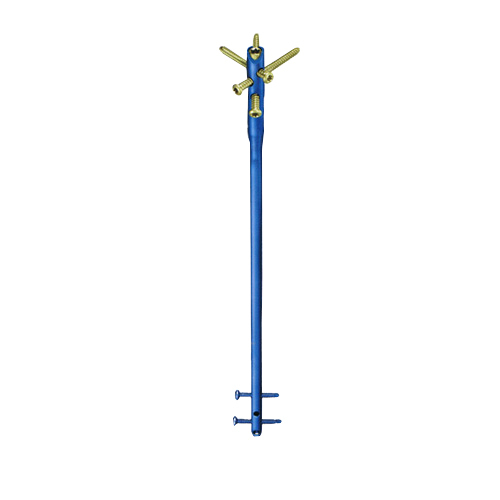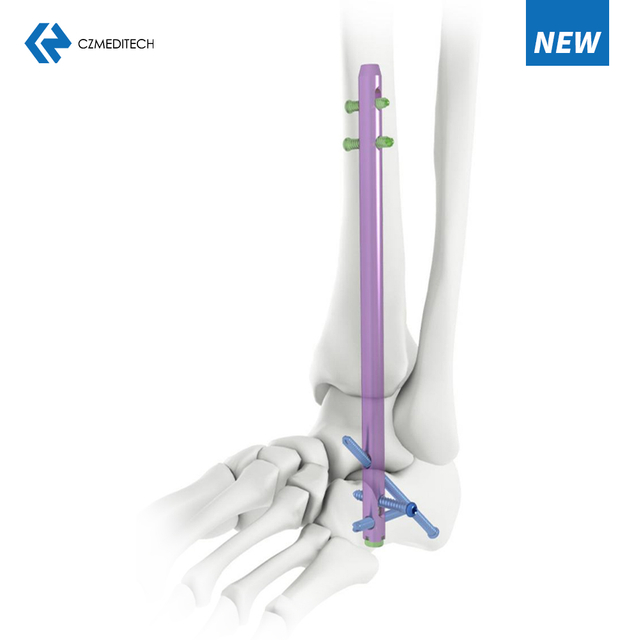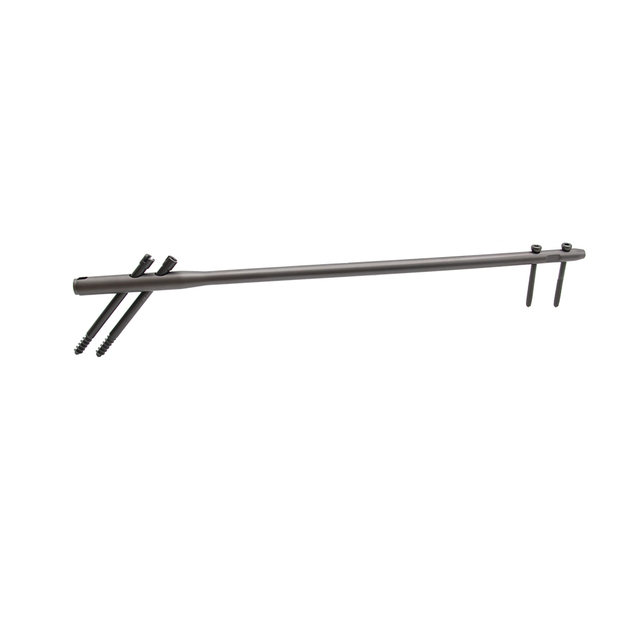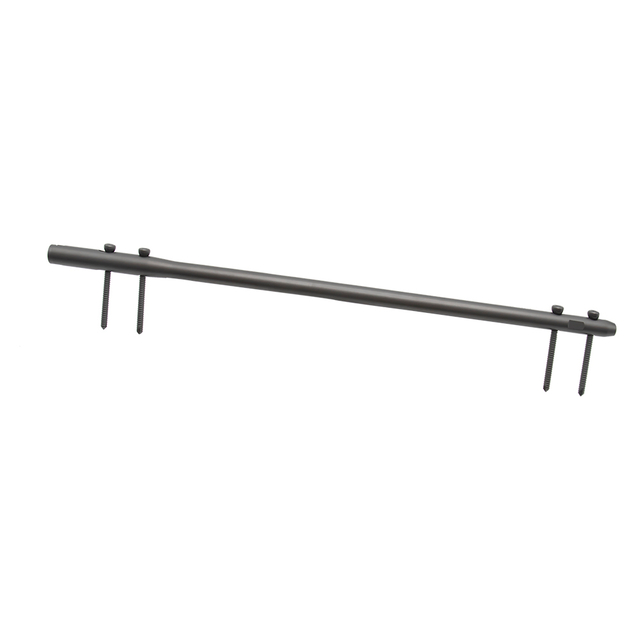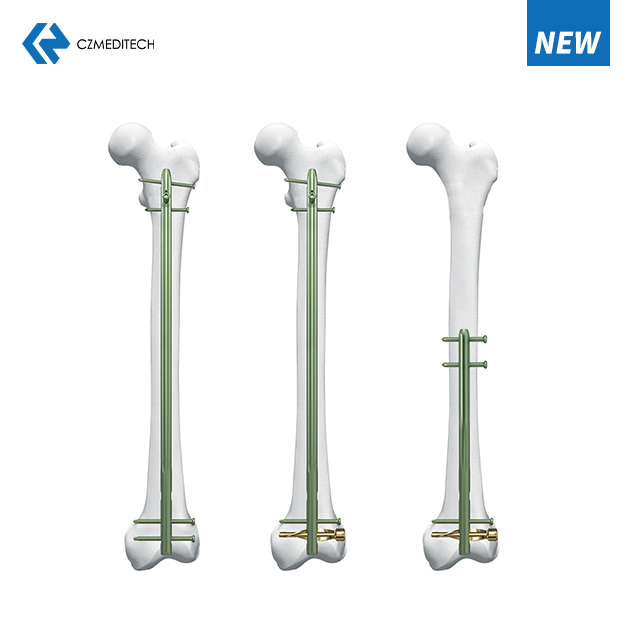What is intramedullary nail?
An intramedullary nail is a type of surgical implant used in orthopedic surgeries to fix bone fractures, particularly long bone fractures. It is a long, thin, metal rod inserted into the hollow medullary canal of the bone and held in place with screws or locking bolts at both ends. The nail provides internal stabilization and support to the fractured bone, allowing it to heal in the proper position. Intramedullary nails are commonly used in the treatment of femur and tibia fractures.
Types of intramedullary nail
There are several types of intramedullary nails used in orthopedic surgeries, including:
Femoral nails: These are used to treat fractures of the femur (thigh bone). They can be either retrograde, inserted from the knee end of the bone, or antegrade, inserted from the hip end.
Tibial nails: These are used to treat fractures of the tibia (shin bone). They are typically inserted from the knee end of the bone.
Humeral nails: These are used to treat fractures of the humerus (upper arm bone).
Intramedullary nails for the hand and foot: These are smaller diameter nails used for fractures in the hand and foot.
Flexible nails: These are specially designed nails that can be used in children and adolescents to treat fractures that are still growing.
The type of intramedullary nail used in surgery will depend on the location and severity of the fracture, as well as the age and overall health of the patient.
Materials of the intramedullary nail
Intramedullary nails can be made from different materials, including stainless steel, titanium, cobalt-chromium, and titanium-nickel alloy. Each material has its own unique properties and benefits, such as strength, durability, and resistance to corrosion. The choice of material depends on the specific needs of the patient and the type of fracture being treated.
What factors will the doctor consider before operation?
Before a surgical procedure, the doctor will consider several factors to determine the best course of treatment for the patient. These factors may include:
The patient's age, medical history, and overall health.
The type and severity of the spinal condition or injury.
The patient's symptoms and level of pain.
The effectiveness of non-surgical treatments.
The potential risks and benefits of surgery.
The patient's lifestyle and activity level.
The patient's expectations and goals for the surgery.
The availability and expertise of surgical facilities and healthcare providers.
By considering these factors, the doctor can develop a personalized treatment plan that is tailored to the individual needs of the patient.
Advantage of intramedullary nail in operation.
The advantages of using an intramedullary nail in surgery include:
Minimal incision: The use of an intramedullary nail allows for a smaller incision compared to traditional open surgery, which can reduce the risk of infection and scarring.
Faster recovery: Since the intramedullary nail is inserted into the bone, it stabilizes the fracture or deformity, allowing for faster healing and recovery.
Reduced pain: The stability provided by the intramedullary nail can reduce the amount of pain experienced during recovery.
Fewer complications: Intramedullary nailing has a lower risk of complications compared to other types of surgical interventions.
Improved mobility: With proper rehabilitation, patients who undergo intramedullary nailing can expect to regain their pre-injury level of mobility and function.
Does the interlocking nail need to be taken out?
In most cases, interlocking nails are not removed after they have been placed. They are designed to remain in place permanently, as long as they are not causing any complications or issues for the patient. However, in some cases, the nail may need to be removed due to infection, nonunion of the bone, or other complications. In these cases, the decision to remove the nail will be made by the patient's doctor based on their individual situation.
How long does it take to recover from intramedullary nail removal?
The recovery time after intramedullary nail removal can vary depending on factors such as the location and size of the nail, the reason for removal, and the individual's overall health. In general, recovery from intramedullary nail removal is usually faster and less painful than the original surgery to insert the nail. Patients can typically resume light activities within a few days after the procedure, but should avoid strenuous exercise or heavy lifting for several weeks to allow the incision site to heal properly. It may take several weeks or months for the bone to fully heal and for the patient to regain full range of motion in the affected area. It is important to follow the doctor's instructions for post-operative care and rehabilitation to ensure the best possible outcome.
English
Français
Русский
Español
العربية
Português
Deutsch
italiano
日本語
한국어
Nederlands
Tiếng Việt
ไทย
Polski
Türkçe
አማርኛ
ພາສາລາວ
ភាសាខ្មែរ
Bahasa Melayu
ဗမာစာ
தமிழ்
Filipino
Bahasa Indonesia
magyar
Română
Čeština
Монгол
қазақ
Српски
हिन्दी
فارسی
Kiswahili
Slovenčina
Slovenščina
Norsk
Svenska
українська
Ελληνικά
Suomi
Հայերեն
עברית
Latine
Dansk
اردو
Shqip
বাংলা
Hrvatski
Afrikaans
Gaeilge
Eesti keel
Māori
नेपाली
Oʻzbekcha
latviešu
অসমীয়া
Aymara
Azərbaycan dili
Bamanankan
Euskara
Беларуская мова
भोजपुरी
Bosanski
Български
Català
Cebuano
Corsu
ދިވެހި
डोग्रिड ने दी
Esperanto
Eʋegbe
Frysk
Galego
ქართული
guarani
ગુજરાતી
Kreyòl ayisyen
Hausa
ʻŌlelo Hawaiʻi
Hmoob
íslenska
Igbo
Ilocano
Basa Jawa
ಕನ್ನಡ
Kinyarwanda
गोंगेन हें नांव
Krio we dɛn kɔl Krio
Kurdî
Kurdî
Кыргызча
Lingala
Lietuvių
Oluganda
Lëtzebuergesch
Македонски
मैथिली
Malagasy
മലയാളം
Malti
मराठी
ꯃꯦꯇꯥꯏ (ꯃꯅꯤꯄꯨꯔꯤ) ꯴.
Mizo tawng
Chichewa
ଓଡ଼ିଆ
Afaan Oromoo
پښتو
ਪੰਜਾਬੀ
Runasimi
Gagana Samoa
संस्कृत
Gaelo Albannach
Sepeti
Sesotho
chiShona
سنڌي
Soomaali
Basa Sunda
Wikang Tagalog
Тоҷикӣ
Татарча
తెలుగు
ትግንያውያን
Xitsonga
Türkmençe
संस्कृत
ئۇيغۇرچە
Cymraeg
isiXhosa
ייִדיש
Yorùbá
isiZulu






